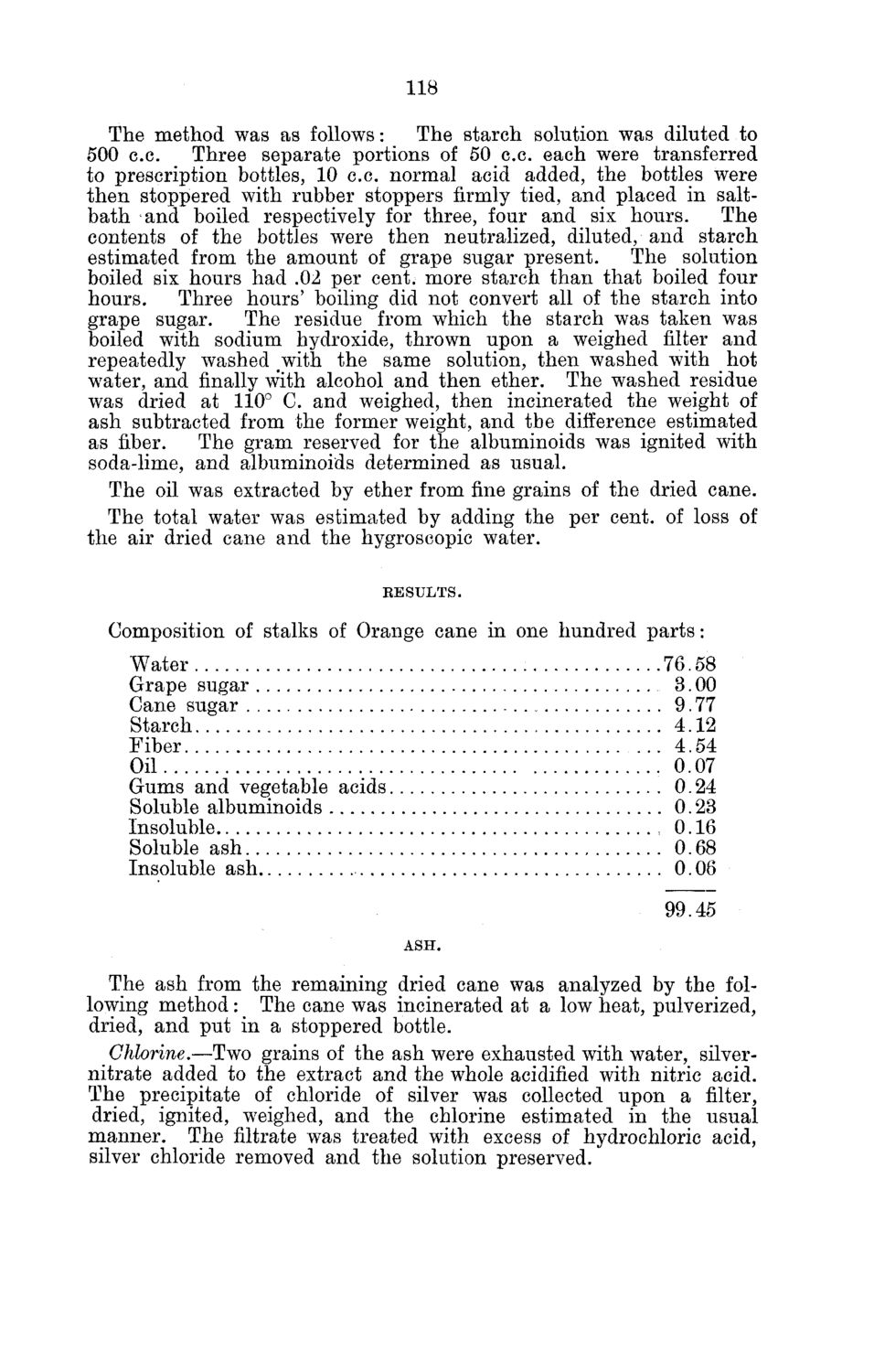| |
| |
Caption: Board of Trustees Minutes - 1880
This is a reduced-resolution page image for fast online browsing.

EXTRACTED TEXT FROM PAGE:
118 The method was as follows: The starch solution was diluted to 500 c.c. Three separate portions of 50 c.c. each were transferred to prescription bottles, 10 c.c. normal acid added, the bottles were then stoppered with rubber stoppers firmly tied, and placed in saltbath and boiled respectively for three, four and six hours. The contents of the bottles were then neutralized, diluted, and starch estimated from the amount of grape sugar present. The solution boiled six hours had .02 per cent, more starch than that boiled four hours. Three hours' boiling did not convert all of the starch into grape sugar. The residue from which the starch was taken was boiled with sodium hydroxide, thrown upon a weighed filter and repeatedly washed with the same solution, then washed with hot water, and finally with alcohol and then ether. The washed residue was dried at 110° C. and weighed, then incinerated the weight of ash subtracted from the former weight, and the difference estimated as fiber. The gram reserved for the albuminoids was ignited with soda-lime, and albuminoids determined as usual. The oil was extracted by ether from fine grains of the dried cane. The total water was estimated by adding the per cent, of loss of the air dried cane and the hygroscopic water. RESULTS. Composition of stalks of Orange cane in one hundred parts: Water Grape sugar Cane sugar Starch Fiber Oil Gums and vegetable acids Soluble albuminoids Insoluble Soluble ash Insoluble ash 76.58 3.00 9.77 4.12 4.54 0.07 . 0.24 0.23 0.16 0.68 0.06 99.45 ASH. The ash from the remaining dried cane was analyzed by the following method: The cane was incinerated at a low heat, pulverized, dried, and put in a stoppered bottle. Chlorine.—Two grains of the ash were exhausted with water, silvernitrate added to the extract and the whole acidified with nitric acid. The precipitate of chloride of silver was collected upon a filter, dried, ignited, weighed, and the chlorine estimated in the usual manner. The filtrate was treated with excess of hydrochloric acid, silver chloride removed and the solution preserved.
| |